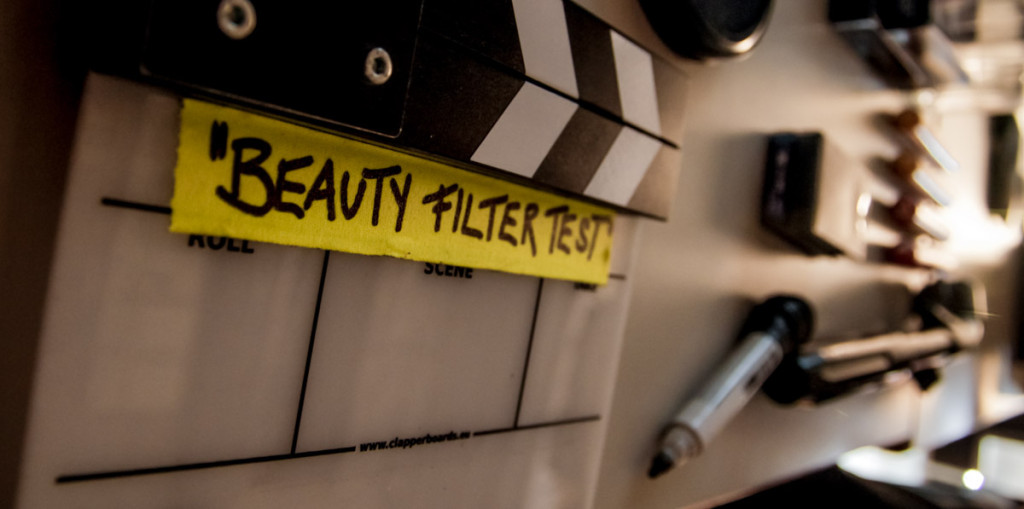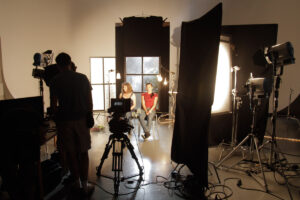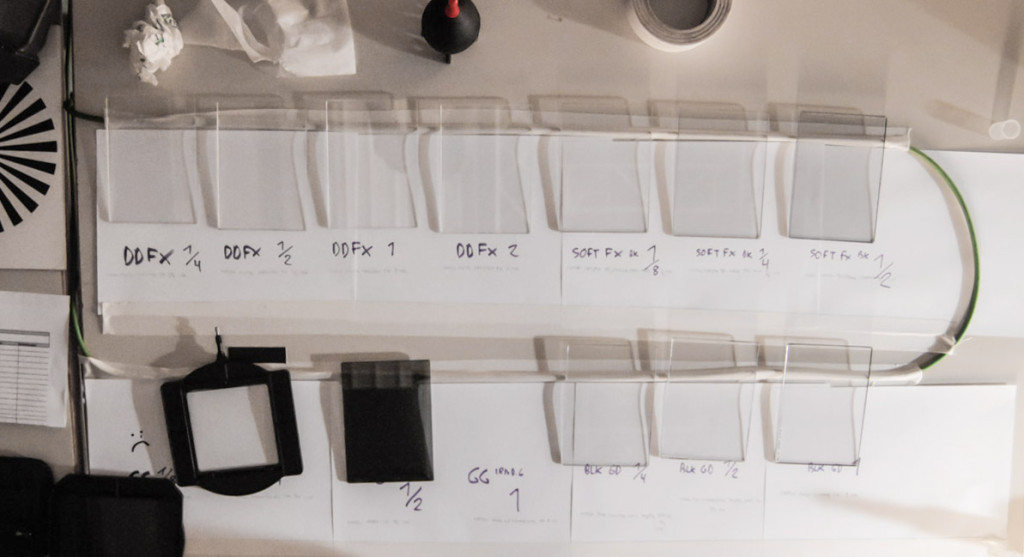Beauty Filter Test – 6 cameras, 18 filters to enhance digital on skin
cinema5D presents the Beauty Filter Test. We have tested 18 different glass filters with 6 different cameras and 2 different lenses to give you a feeling of how glass filters may (or may not) enhance the look of a digital camera nowardays. Among these filters (provided by Tiffen) are some of the most widely used filters by cinematographers around the world.
Please enjoy the video that shows the filters with each camera and two different lens setups in sequential order. The video is 50 minutes in length. If you would like to scrub to a certain camera you will find the timecodes for these below:
00:30 Arri Alexa
08:00 Red Mx
18:30 Canon 7D
27:40 Sony F65
36:10 Sony FS700
44:00 Canon C300
For a direct comparison between only these 6 different cameras (no filters) we have a separate video here: LINK
If you would not like to download the clip but observe the individual frames there are high quality screenshots of each filter further down this article.
The idea
With a growing number of digital cinema cameras there is a certain demand for filters that can enhance their look, make the results more filmic again and make skin look more organic. We wanted to know how these “beauty” filters perform and compared them with a number of important digital film cameras from all budgets including HDSLR up to the Sony F65.
What currently makes digital film still look digital seems to be the sharpness of highlights which is why these specialized “beauty” or “soft focus” filters can help add smoothness without affecting other regions of the image.
What we found
Having spent a lot of time to watch this footage over and over these past months and speaking to people from the industry we have written a 50 page essay and summary on the topic and our findings (it’s in German, if you’re interested please contact us).
1. We found that different cameras react to the filters differently, hence it’s important to choose the right filter for the subject & camera.
2. For us the Tiffen Glimmerglass and Digital Diffusion FX series were the most effective in smoothing highlights and skin while not affecting other regions of the image. Other filters like the famous old Black Promist adds the softness where we don’t like it so much and softens a lot of the whole image. Of course the right filter for you is always the right one for your shot and project. Which is why you’ll have to watch the video and decide for yourself when and which filter might add something to what you’re shooting.
Other
3. There is a big misconseption about adding filter effects in post! Digital filters (Post Production / Grading) can NOT reproduce what a glass filter does. We have tested Tiffen’s very own Filter Suite and also asked the colorist to reproduce an effect on Filmlight Baselight which could not be done as the nuances are too fine and software does not know what goes on around the recorded frame, while the glass filter on camera reacts to all the light sources around, which is especially necessary on moving shots.
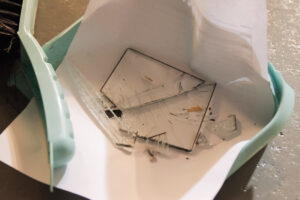 Notes
Notes
• Schneider Optics is another important manufacturer of glass filters besides Tiffen but did not provide filters.
“unfortunately we will not be able to supply any filters for your test. Many of the filters you require are top selling products for us and our inventory levels are either back ordered or have very low quantities.”.
• For our Beauty Filter Test we used the filters we received from Tiffen. Unfortunately an IR filter without ND wasn’t available. It can be argued that an ND filter is commonly used and therefore provides a good test environment as a combo filter anyway.
• There were some discrepancies between the engraved labels on some of the filters and their actual strength. A representative from Tiffen told us that “Though they should remain within tolerence for the density stated. It should not happen but it does.” and said the same happens on filters from other manufacturers. The filters we received that had a wrong engraving were:
– Black Glimmer Diff 1/4 was stronger than Black Glimmer Diff 1/2
– Glimmerglass 1/2 was a lot stronger than Glimmerglass TM 1
(We were told TM simply stands for “Trade Mark”)
– Digital Diffusion 1 was stronger than Digital Diffusion 2
• Double reflections. Often throughout this test you will see double reflections in the candle or on-lights. These reflections originated from the Mattebox we used which was not 100% precise in its alignment and the two glass filters we had in it. If you use 2 filters at the same time it is imperative the Mattebox is very precise, otherwise double reflections in highlights may appear just like it happened during this test.
Actors
We choose to work with two different skin types and two actors with different age to see the biggest differences. Both actors received make up throughout the test.
Key: The subjects were lit with 2x 2KW Fresnel lights through a 1x2m 1/2 WD softbox from the right.
Fill: From the left we used a slightly dimmed down Dedo 650W with a Softbox.
Back: As backlight we used an Arri M18 (daylight) with a 1/4 CTS extended high up and lit through the window in the back.
On: The lights visible in the scene are a soft 100W buld, a clear 200W bulb, a 60W linestra (the long one) and a snake light wrapped around a tripod.
Lenses
All cameras were equipped with a PL mount (7D with PL modification, FS700 with PL adapter, C300 PL version) and shot with the Zeiss UltraPrime 35mm and Zeiss UltraPrime 85mm at an aperture of 4.0.
Since all sensors vary in size the cameras were moved forwards or backwards in order to get matching frames.
Note that when using wider lenses you need stronger diffusion, longer lenses require less.
Cameras used in order of appearance (all shot at 24fps):
• Arri Alexa || HD 1920×1080 (Quicktime ProRes 444 LogC)
• Red Mx || 4K 16:9 3840×2160 (4K REDRAW, redgamma, redcolor)
• Canon EOS 7D || HD 1920×1080 (Canon H.264 mpeg-4, Technicolor Cinestyle)
• Sony F65 || 4K 4096×2160 (4K Sony RAW, S-Gamut, Slog2)
• Sony FS700 || HD 1920×1080 (NXCAM AVCHD mpeg-4)
• Canon C300 PL || HD 1920×1080 (Canon XF Codec 4:2:2 mpeg-2)
Grading
The shots from all cameras were graded and matched at Listo GmbH in Vienna on Filmlight Baselight by a professional colorist.
The shots were not graded metrologically perfect but rather the way the colorist would grade footage from each camera as a base to prepare for final grading.
The Filters
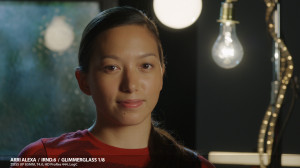

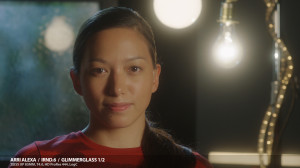
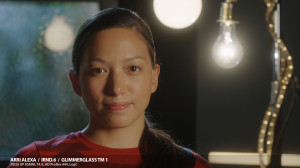 Tiffen Glimmerglass ($225)
Tiffen Glimmerglass ($225)
– Glimmerglass 1/8 (only on Alexa)
– Glimmerglass 1/4
– Glimmerglass 1/2
– Glimmerglass TM 1
As mentioned earlier the Glimmerglass filter was one of our favourite. Its strength is in smoothing the highlights, rendering very nice not obtrusive flares, softening the harsher parts of the skin while at the same time leaving the other parts of the image relatively untouched.
A nice strength for a normal use of this filter is probably around 1/4 – 1 depending on the focal length of your lens and if there’s a light source that will directly hit your lens as this can make all the difference.
The flares this filter creates around light sources are very nice and what is even nicer is that eyelights are not suffering from the same flaring.
As mentioned earlier the filter Glimmerglass 1/2 we received was a lot stronger than Glimmerglass TM 1 due to a labelling error of the manufacturer.
See the rest of the filters evaluated on PAGE 2:
GO TO PAGE 2 >>
